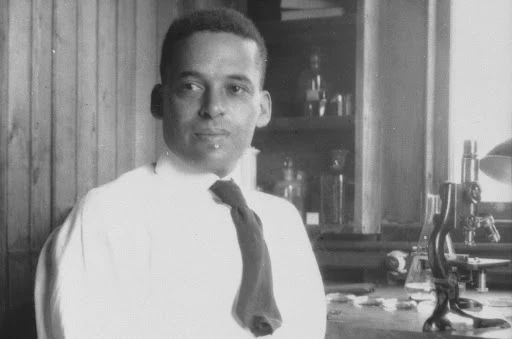He made history 108 years ago today!
Ernest Everett Just was born August 14, 1883 in Charleston, South Carolina to parents Charles Fraser Just and Mary Just, BlackPast.org reports. His father passed away when he was four years old, causing his mother to move the family to James Island, a Gullah community. She became a major influence among residents, galvanizing a group to purchase their own land and start their own community, and they, in turn, named the town Maryville in her honor.
Just was sent to some of the best college prep schools in the region before heading north to enroll at Kimball Union Academy in New Hampshire. Although he was the only Black student, he felt welcomed, the complete opposite of what he felt after graduation when he enrolled at Dartmouth. Socially isolated, Just focused his energy on his studies, graduating Magna Cum Laude with a degree in biology in 1907. Shortly after, he accepted a position as an instructor of English and Rhetoric at Howard University in Washington, D.C. In 1909, he was invited to become a summer research assistant at The University of Chicago’s Marine Biological Laboratory, the first African-American to receive the offer, under MBL Director Frank R. Lillie, MBL.edu reports. A year later, he joined the biology department and in 1912, he was appointed professor.
Just made a name for himself while at Howard, helping to form prestigious organizations like Omega Psi Phi and simultaneously cutting his teeth in research at the MBL, focusing on issues of embryology and fertilization. He married his first wife in 1912, and the couple had three children. In 1915, he made history as the first recipient of the NAACP’s illustrious Spingarn Medal for his pioneering work as a scientist. He eventually earned a doctorate degree from the University of Chicago, becoming one of the first to earn a doctorate at a major university.
Despite his vast achievements, Just was unable to find work at any major educational institution due to his race. He would eventually travel to Europe, studying at the Stazione Zoologica in Italy, the Kaiser-Wilhelm-Institut in Berlin, the Sorbonne in Paris, and the Station Biologique in Roscoff, France. He would continue his work at the MBL every summer for more than 20 years before choosing to remain in Europe. He divorced in 1939, remarried and had another daughter, Biography.com reports. He was working in France when the Germans invaded and was subsequently kidnapped and held as a prisoner of war before being rescued by U.S. forces. Just would die just a year later in D.C. at the age of 58 on October 27, 1941 due to complications from pancreatic cancer.
Though his death was untimely, his legacy has endured. Just’s work challenged the leading theories of scientists at the time, and his extensive research was responsible for furthering our understanding of cell development. Over the course of his career, he published more than 70 scientific articles and two books. Today, Just is one of the most internationally renowned scientists, with schools and buildings named in his honor all over the globe. His work served as the basis for many other budding Black scientists, and we remember his life, legacy, and contributions.
Because of Ernest E. Just, we can!
Meet Ernest Everett Just, the recipient of the first Spingarn Medal. Photo Courtesy of MBL Archives

